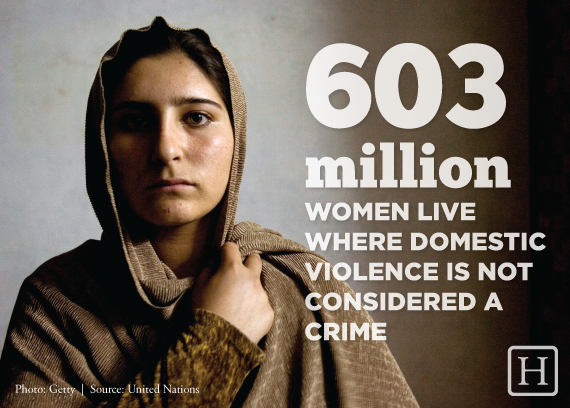Every second woman in Pakistan suffers from some form of domestic violence that has an extremely damaging effect on her physical and mental well-being, said Dr Tazeen Saeed Ali during a session held on Saturday as part of the three-day national health sciences research symposium being organised at the Aga Khan University (AKU).
Titled Mind and brain, neuroscience today and tomorrow the conference features a number of local and foreign experts discussing and sharing knowledge on subjects ranging from translational neuroscience, artificial intelligence, brain trauma management to modern approaches to epilepsy, telemedicine and new treatment paradigms in child and adolescent mental health.
According to Dr Ali, the overall prevalence of domestic violence in Pakistan ranges between 21pc and 50pc. Women suffer violence over conflict with husbands and in-laws, at times over financial matters.
“Our study has shown that 97.7pc health professionals suffered some form of domestic violence at some point of their married life whereas 72pc had to face sexual abuse at home,” Dr Ali said, adding that women facing violence also developed reproductive health problems.
Infertility, she pointed out, was also found to be a major factor that provoked violence against women, though violence had its roots in the submissive gender role the society assigned to women.
Talking about how violence impacted health, she said it could have a wide ranging negative effect as the consequent hormonal changes altered immune system, damage growth and development, digestive and reproductive systems.
She recommended a combined multi-sectoral approach and awareness of women’s rights, among other things, as part of efforts to improve societal mindset towards women.
Sharing findings of her study based on the magnitude of workplace violence towards nurses at private and public sector hospitals, Rozina Somani, senior instructor at the AKU School of Nursing and Midwifery, said interviews with 458 nurses of four hospitals showed that 82pc of them had to face some form of violence at job.
“Seventy-seven per cent faced verbal abuse whereas 10pc were subjected to sexual violence. Thirty-four per cent complained of bullying,” she said.
Continuing, she observed that prevalence of violence was 83.6pc at private and 79.5pc at government hospitals.
The perpetrators were patient relatives, staff members and patients. Nurses found most vulnerable to violence aged between 20 and 29 and had less than five years of professional experience, she said.
“Low image of women, violence within society and low image of nursing profession are some major reasons which make women vulnerable to violence,” she said.
No concept of public safety
At another session on trauma management in Pakistan, experts expressed concern that the country had not a single designated functional trauma centre despite the fact it was among the top countries in the world severely affected by violence and terrorism.
“There is no concept of public safety and pre-hospital patient management as is evident from the recent accidents in Landhi and Gaddani, which resulted in huge loss of life.
“Routinely, general surgeons handle trauma cases at hospitals in our country while emergency interventional radiology is almost non-existent,” said Dr Hasnain Zafar, adding that it was the state’s responsibility to develop health and emergency services and run ambulance system.
Earlier in the morning, speakers discussed revolutionary changes and medical breakthroughs taking place in the field of neuroscience.
Computer simulations and algorithms, they said, had enabled researchers to emulate the complex electrochemistry of brain. This had resulted in new insights into mental disorders such as epilepsy — which affects two million people in Pakistan — and a range of medical innovations that is enabling children, who were born deaf, to hear for the first time and soldiers, who lost arms and legs in war, to control robotic limbs with their minds.
On the importance of neuroscience research, Dr Saad Shafqat, a professor of neurology at the AKU, said: “The human brain and its enigmatic product, the mind, are at the core of human identity, intelligence, character and personality. Together, their activity determines what it means to be human.”
According to him, diseases of the brain and mind such as epilepsy, stroke, depression and schizophrenia are devastating as they alter the person as we know them.
“Just as studies in the 1990s on clot-busting drugs revolutionised stroke treatment, we hope the research and clinical insights shared today will lead to changes in treatment for mental, neurological and neurosurgical illnesses in Pakistan.”
Dr Ali Minai, a professor of electrical engineering and computer systems at the University of Cinncinati, USA, talked about how both the brain and the computer were complex systems that used electrical activity to process information.
“Insights from the brain are already expanding the frontiers of medical and scientific knowledge. The future is even more promising as the creation of artificial intelligence or ‘learning computers’ can be used to augment our bodies for a wide variety of uses from entertainment to education and even applications related to security,” he said.
Dr Fowzia Siddiqui, a leading epilepsy researcher based at the AKU, pointed out that the centuries-old myth that epileptics were ‘possessed’ by supernatural forces was still widely prevailed in Pakistan and research had shown that only two out of 100 people in rural areas and less than three out of 10 epileptics in urban settlements were taking any medicine to control their disorder.
“Alarmingly, international studies estimate that 80 per cent of epileptics living in developing countries still remain untreated,” she said.


3 comments:
Nice article thanks for sharing.Very useful information for people.
If you are a student and cannot write a thesis statement for your essay, I know how to help you. I found a thesis builder on one of those students sites dedicated to different tips for college. Long story short, it can generates thesis statement for you. And it is free. So it is a perfect option for students.
Post a Comment